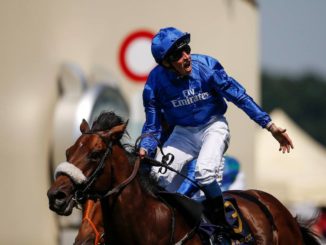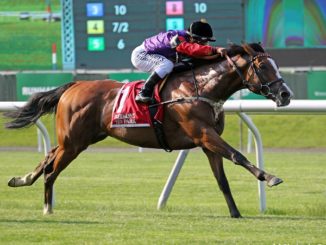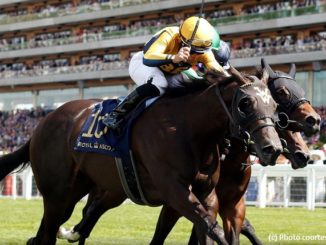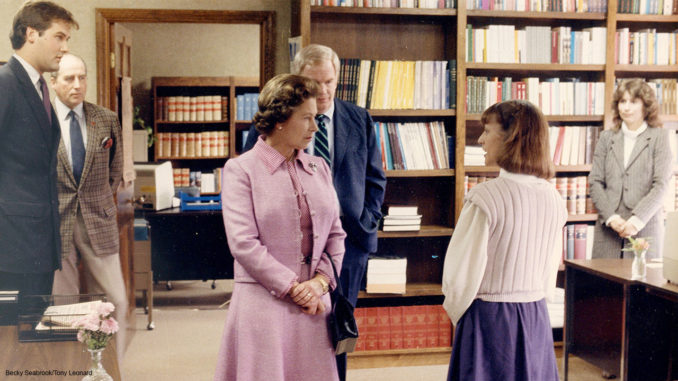
Celebrate with us the 50th anniversary of Bloodstock Research Information Services.
Harry Herbert arrived to work at Bloodstock Research Information Services one day in early 1984 with something surprising to tell company founder and president Richard “Dick” Broadbent III, and asked the secretary if he could see Broadbent. The secretary got back to Herbert and said Broadbent would let him know.
“I said, ‘It’s quite important,’ and she said, ‘I don’t think I’ll be quite brave enough to tell him that,’” Herbert said.
A larger-than-life character with the reputation for a mercurial temperament, Broadbent was soon on the office intercom and, in mildly colorful language, demanded Herbert come see him. The greeting when Herbert arrived in Broadbent’s office was similar in tone.
“’You really don’t know much about me,’” Herbert recalled telling Broadbent. “’My dad is quite a well-known person in racing in the U.K., and he also manages the Queen’s horses and is her closest friend.’ (Broadbent) went ballistic. He thought I was literally taking the piss out of him.
“I said, ‘No, Mr. Broadbent, it’s true. (The Queen) wants to come to Kentucky and see where I work – to see what you’ve done here, and what you’ve achieved.’
“Bit by bit, this terrifying, huge man disintegrated. He sort of shrank in front of my eyes. He literally became a different person. It was quite extraordinary.”
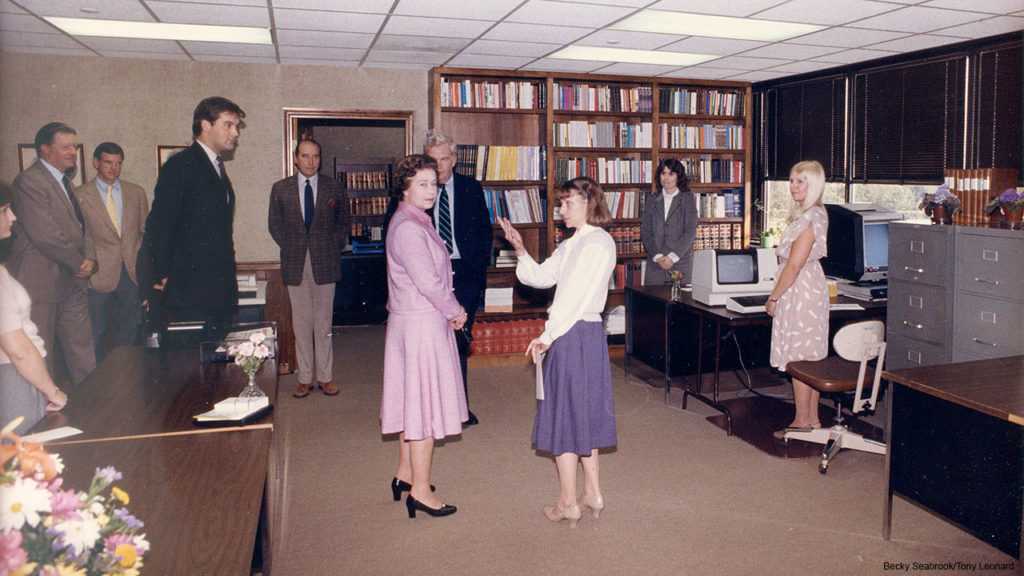
(Photo courtesy of Becky Seabrook/Tony Leonard)
Among the undisputed highlights of Brisnet’s 50-year history was the visit from Queen Elizabeth II to its Lexington, Kentucky, offices on Oct. 10, 1984, an event that likely wouldn’t have happened at any other time if not for the mutual connection of Harry Herbert.
Herbert, 62, has worn and continues to wear many hats in the racing and breeding industry, most notably as chairman and managing director of Highclere Thoroughbreds. Herbert is the second son of the late Seventh Earl of Carnarvon, who viewers of the Netflix miniseries “The Crown” would recognize as the Queen’s life-long friend and racing manager Lord Porchester (“Porchy”).
“I started following my dad’s horses in my very early 20s, and he saw I was getting interested (in racing),” Herbert said. “It was a dormant gene, where you suddenly wanted to learn more. You want to see the horses train in the morning. I used to go with him to Major Dick Hern’s yard. I suppose that’s what really got me going.
“I was working in the City (London’s financial district) for a stockbroking company. It wasn’t doing it for me, and ideally I wanted to be an actor. That wasn’t really going to happen.”
Possessing a U.S. passport and dual citizenship, via his American-born mother, Herbert was encouraged by jockey Steve Cauthen, who by then had shifted his tack to England, to pursue an industry career in the U.S., rather than be a “daddy’s boy” at home. With prominent horsemen George Strawbridge and Russell Jones Jr. serving as intermediaries, Herbert eventually secured interviews with Bloodstock Research and with Santa Anita.
“I heard right before Christmas I got both jobs I had applied for. (It was) Incredibly exciting,” Herbert said. “I decided on Kentucky, and I still don’t quite know why. (It was) sort of a gut feeling to go to Lexington versus Santa Anita, which is a very weird decision.”
Although he drew Broadbent’s ire by unknowingly arriving late to work on his first day, Herbert soon relished the day-to-day opportunities and access to pedigree information afforded to him in his new position. In particular, the ability to computer generate an analysis between certain stallions and mares for genetic compatibility proved a boon, both professionally and personally.
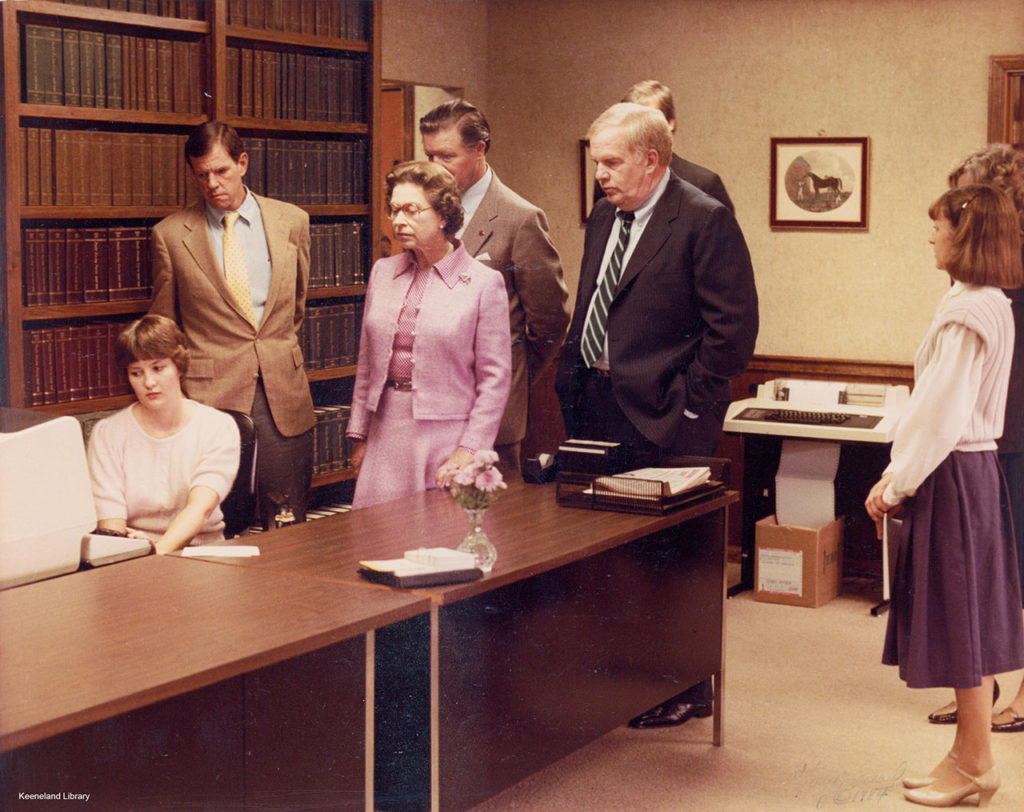
(Courtesy of the Keeneland Library/Keeneland Association/Tony Leonard)
This image is protected by copyright and may not be reproduced in print or electronically without written permission of the Keeneland Library.
“I soon became really addicted to the whole ability to be able to look at pedigrees and to match what had happened with sire lines and nicks and patterns using the service that Bloodstock Research offered,” Herbert said.
“I was told when I left Eton College – I wasn’t the best academic by a long stretch – but my master told me, ‘The one thing we’ve set you up for in life, Harry Herbert, is how to write a letter.’ And so, when I joined Bloodstock Research, I started writing letters to those people who wanted their mares mated and put through the system. I guess I could write a half-decent letter, and suddenly the business began to go really well. People started hearing about it. Arthur Hancock came in, (along with) Nelson Bunker Hunt.
“All sorts of people wanted this service, and I would stay pretty late in the evenings, because I so wanted to study all of my father’s pedigrees and why he’d done the matings he’d done over the years. One of those great moments was calling him up and saying, ‘Now I know why you made this mating.’ He couldn’t believe it, as I sort of dissected every pedigree.”
Duly impressed with what he was hearing from his son across the pond, it was natural to expect Lord Porchester would share this information with the Queen.
“My father called me up and said, ‘I was talking to the Queen and I thought she might be interested to come to Kentucky and see the stud farms and to see it all for the first time. Maybe you can help organize it. She definitely wants to see how the whole computer thing works and what you’re doing on the pedigree,’” Herbert said.
Planning for arrival
There was plenty to plan in the six months or so between Herbert’s meeting with Broadbent and the Queen’s arrival, but not everyone in the office was immediately apprised of the impending royal visit. One person in the know was Becky Seabrook, who joined the company in 1979 and still serves as its director of research.
One of Seabrook’s tasks was to help compile and catalog the pedigrees of the Queen’s horses, so Broadbent could present them in book form during the visit.
“We got a little bit of advance notice, so we could make sure all the pedigrees of all her horses were just right,” Seabrook said. “I was told to do a couple-paragraph talk (to the Queen) about what we did, and back then the research department was in the library. It looked rather impressive.
“At some point they did a dry run. Lord Porchester and other people came and saw it for themselves before the Queen came over.”
The Queen, who stayed at Lane’s End Farm as the guest of future U.S. Ambassador Will Farish, spent much of her visit to Central Kentucky that October touring the region’s farms and viewing potential stallions for her broodmare band. On Oct. 10, after a lunch with Mr. and Mrs. John Gaines at Gainesway Farm, the Queen and her entourage proceeded to Bloodstock Research.
“She came in the afternoon, I want to say around 2,” Seabrook recalled. “We had the Secret Service, at some point, shut down the building. If you were in, you were in. If you were out, you couldn’t come in. They locked it down. They took dogs around beforehand – checked everything. We trailed them around and watched them do their thing. We couldn’t do anything. Everything was pretty much shut down.
“That was about it — just waiting. Nobody did a whole lot.”

(Courtesy of the Keeneland Library/Keeneland Association)
This image is protected by copyright and may not be reproduced in print or electronically without written permission of the Keeneland Library.
As expected, nerves abounded for the likes of Seabrook and Broadbent, but the Queen eventually put everyone at ease.
“(I was) very nervous; public speaking not being my strong suit,” Seabrook said. “Harry had gone over everything – how to say the proper things. Did you (have to) curtsy? Being Americans, we didn’t have to. I think I bobbed a little curtsy.
“She acted interested, given her interest in horses, and given that it was cutting edge at the time. She was pleasant, not intimidating. I don’t remember her saying much.”
“She’s a very gracious lady,” Broadbent told the Louisville Courier-Journal at the time. “She made me feel very at ease, which was difficult.”
After listening to Seabrook’s brief presentation, the Queen was shown the computer room and system, the speed and accuracy of which fascinated the Queen and her party, according to Broadbent. Employees were required to stay in their offices until her departure, but afterward were welcome into the conference room to imbibe on champagne Broadbent provided to celebrate the visit.
“It was simply an incredible moment for (Broadbent) and his family,” Herbert said. “When he presented the Queen with a token, she presented him with a picture of herself signed with thanks. When she left, he couldn’t stop smiling and he said it was one of the greatest days of his life. It was an extraordinary time, and everyone was really proud of what the company had done.
“She loved her visit. She was genuinely interested,” Herbert added. “Of course, she knows the pedigrees like the back of her hand. It’s her great, great love.”
“It was exciting. It was a highlight, something that wouldn’t have happened otherwise,” Seabrook said. “We looked forward to it for months, and then it kind of came and went like things do. It was a very interesting time and everything just kind of fell together where it worked out.”
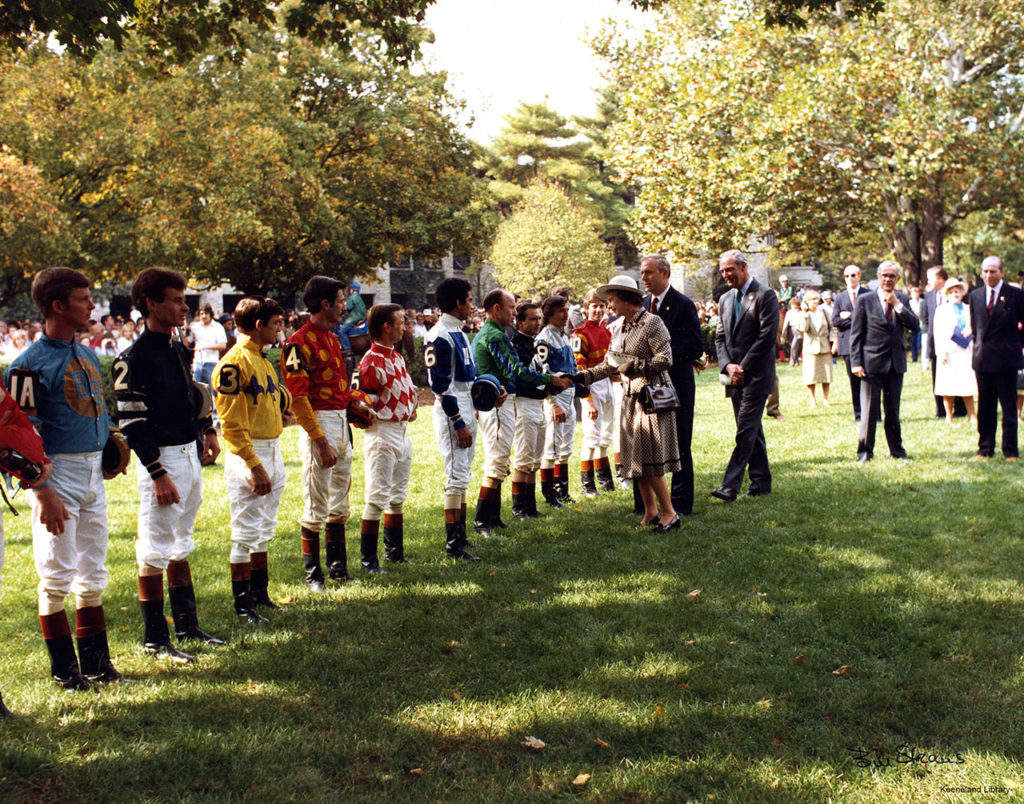
(Courtesy of the Keeneland Library/Keeneland Association/Bill Strauss)
This image is protected by copyright and may not be reproduced in print or electronically without written permission of the Keeneland Library.
The visit continues
The Queen visited more farms the following day and then attended the races at Keeneland, where she made the trophy presentation to the winners of the inaugural Queen Elizabeth II Challenge Cup. The three-year-old filly fixture was run at 1 1/16 miles on dirt, but moved to Keeneland’s new turf course the following year. It is now a traditional Grade 1 highlight of the track’s fall meet.
Herbert moved on from Bloodstock Research soon after the Queen’s visit, while Broadbent remained at the helm of the company until he sold it to Churchill Downs Inc. in 2007, three years prior to his death at the age of 73. The Queen, now approaching 70 years on the throne, remains involved as ever in her love of Thoroughbred racing.
“She’s a remarkable woman, (has) awesome knowledge, and I think she’s still as keen today as she ever was, with (racing manager) John Warren and her planning matings,” Herbert said. “She’s an inspiration in all fields. Certainly racing is very lucky to have her interest and her patronage.”
More images from Queen Elizabeth’s trip to Keeneland in 1984. All images are courtesy of the Keeneland Library/Keeneland Association and areprotected by copyright and may not be reproduced in print or electronically without written permission of the Keeneland Library.
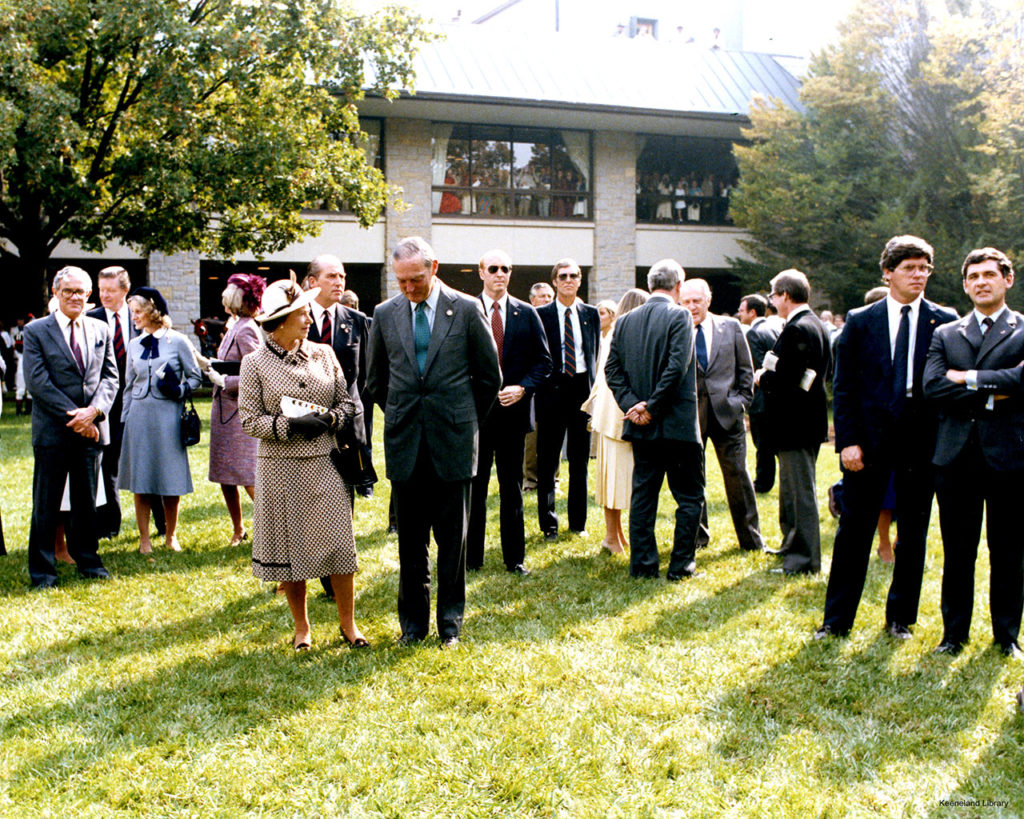
Queen Elizabeth II with Ted Bassett 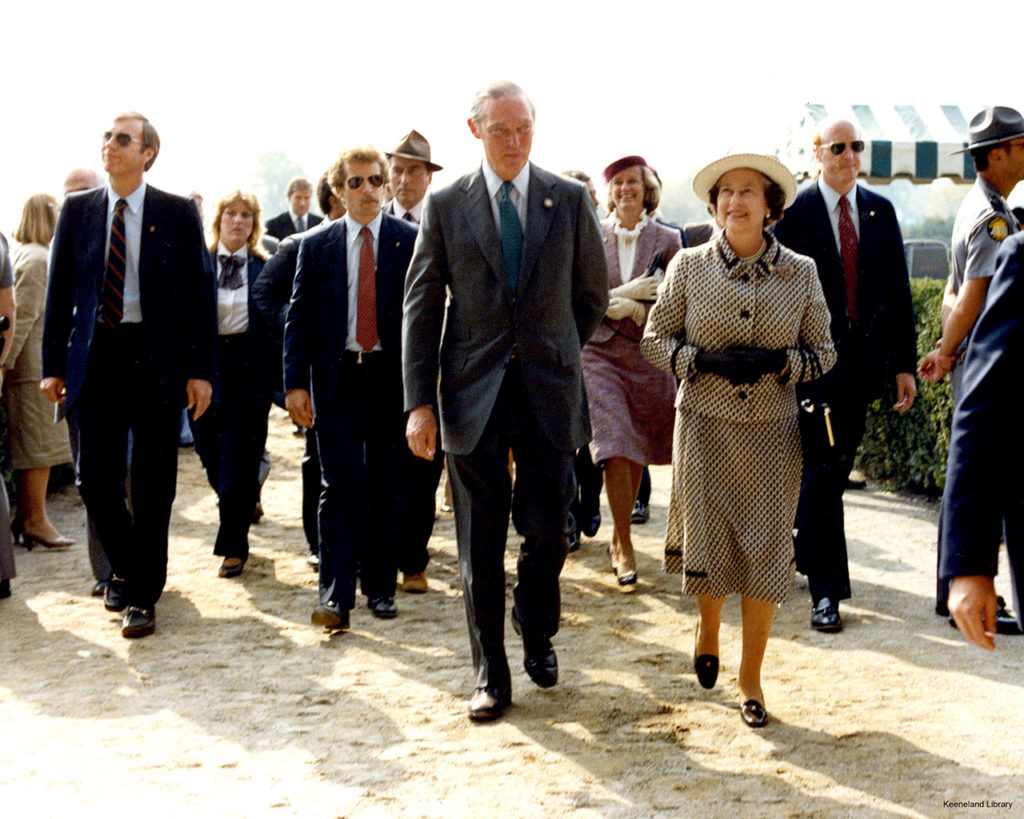
Queen Elizabeth II with Ted Bassett

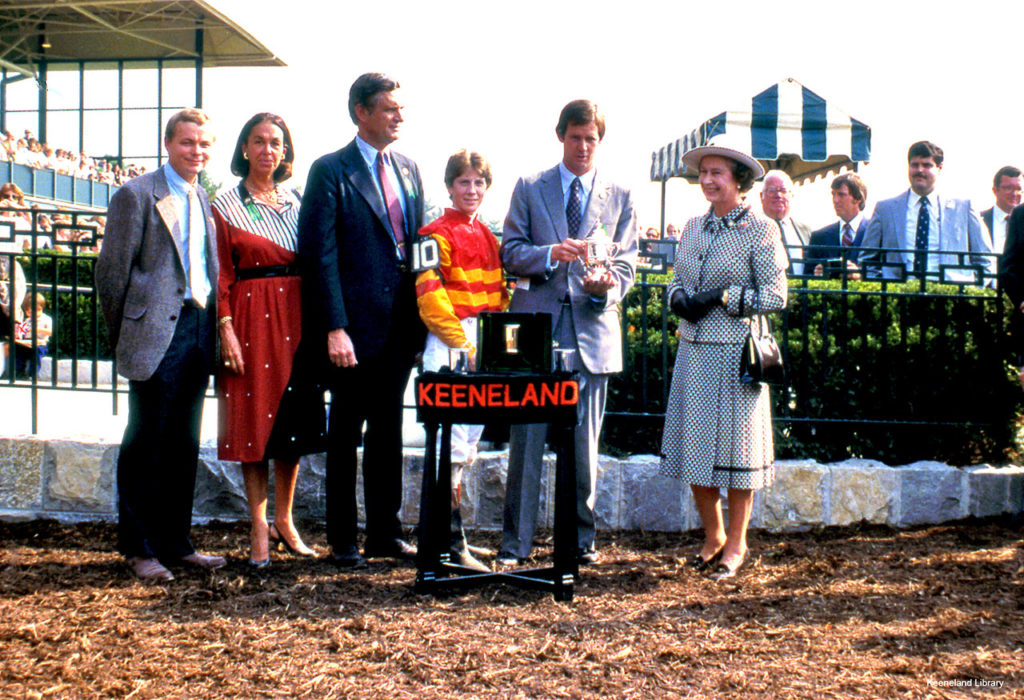
Queen Elizabeth II with Steve Penrod, Mrs. William Lickle, Keith Allen & Seth Hancock 
Queen Elizabeth II with Ted Bassett

